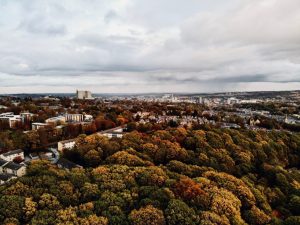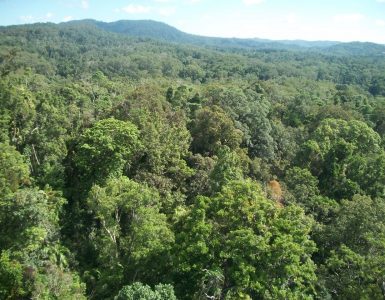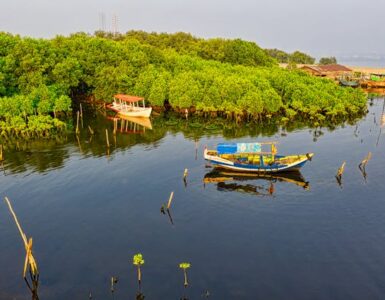What is Miyawaki Method
Miyawaki’s method comes from a famous Japanese botanist and plant expert – Professor Akira Miyawaki. He is globally regarded as a specialist in the restoration of natural vegetation on degraded land.
This method of afforestation involves planting a number of different species of native trees close to each other through a logical sequence. The method not only saves space but plants & trees being in close proximity support each other. When they become lush and green, they also prevent sunlight to reach the ground, which means lesser evaporation of groundwater.
Close planting of many random trees in a small area creates a dense forest that enriches the green cover and reinforces the fertility of the soil.
Miyawaki’s method ensures that forests grow 10x faster, are 30x denser, 100x biodiverse, and are 100 percent organic. While the conventional method can take more than 100 years for the forest cover, the Miyawaki method can accentuate the growth in 20-30 years.
In addition, scientific studies have indicated that a single tree can capture up to 22kg of CO2 in a single year but when multiple species are grown together the trees grow faster and capture up to 6 percent per more CO2.

First adoption of Miyawaki Forest.
The first Miyawaki forest was implemented in the early 1970s by the Japanese company, Nippon Steel Corporation, which wanted to plant forests on embankments around its steel factory.
Professor Miyawaki identified the potential areas, by studying the surrounding nearby forests. He chose various local species of trees and then created a nursery where plants were mixed and then planted on the site.
The steel company was so impressed with the results that in the next few years it created forests with this method at various other sites of its steel mills.
The success story reached various parts of Japan which led to its wide-scale adoption at not only various factories but also in other wastelands and degraded land sites.
For his contribution, Dr. Akira Miyawaki has received many accolades and prizes, including the Blue Planet Prize in 2009 – considered to be a prestigious award that recognizes noticeable efforts in applications of science that contribute to solving global environmental problems.
Growing adoption of the Miyawaki Technique
Though this plantation technique was first tested in Japan now this model is adopted around the world for creating dense environment protection forests. Miyawaki’s method of planting trees has been replicated in over 3000 areas, including over 1,400 sites in Japan. Due to its relevance and applicability, this method has reached countries like Thailand, Indonesia, France, Malaysia, Borneo, Brazil, India, and many other counties around the globe.
In 2000, the Miyawaki method was tested for the first time in a Mediterranean ecosystem in Italy, an area where traditional reforestation methods had failed. Results obtained after a few years of planting trees were outstanding: the plant biodiversity increased rapidly in the region.
A research paper published in 2010, has explained in detail the effectiveness of this technique in the Mediterranean region.
Wrapping Up
Trees help in supplying the oxygen in the atmosphere, absorbing pollutants from the air we breathe, preventing soil erosion, and providing fruits & vegetables, as well as a natural home to biodiversity.
In addition, forests provide jobs and livelihoods to thousands of people. Furniture, spices, rubber, paper, medicine, and tourism, among hundreds of other sectors, leverage resources from the wood of the forests for commercial purposes. Hopefully, more regions, cities, and countries come forward to use this method for a greener and healthier world.
Want to know more about the importance of forests? Read here.





Add comment